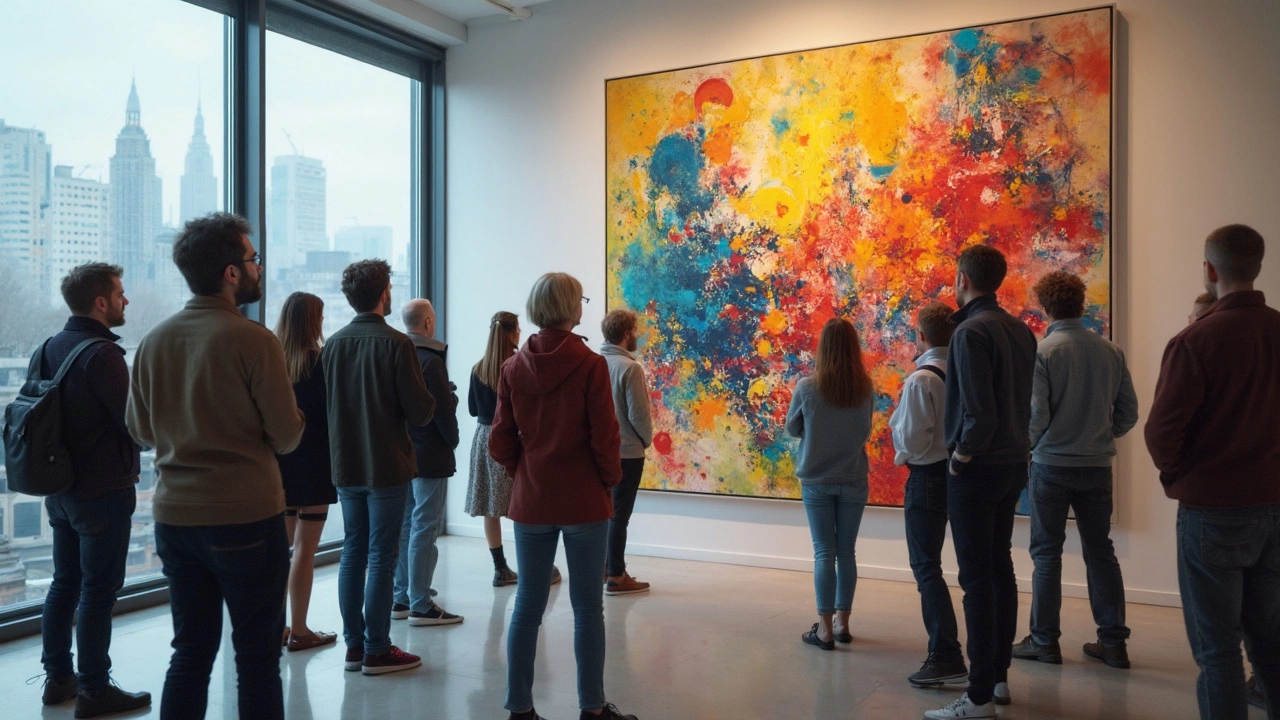Understanding Art: A Straightforward Guide
Ever looked at a painting and felt lost? You’re not alone. Figuring out what’s going on in a piece of art doesn’t have to feel like a puzzle you can’t solve. This guide breaks down the basics so you can walk into a gallery, scroll through online, or chat with an artist and actually get what’s happening.
What Art Really Means
First off, art is a way to share feelings, ideas, or stories without using words. Think of a song that makes you smile—that’s the feeling a painting can give you too. Abstract art, for example, doesn’t show a clear scene. Instead, it uses color, shape, and texture to hit you on an emotional level. When you see a splash of red next to a calm blue, your brain reads that as excitement meeting calm. The meaning isn’t hidden; it’s right there, waiting for you to notice how the pieces make you feel.
Portraits work a bit differently. They focus on a person’s face, eyes, and posture to reveal personality. Artists often spend extra time on the eyes because they guide the viewer’s emotional response. If the eyes stare straight at you, the portrait feels direct and intimate. If they look away, it can feel mysterious or aloof. Knowing this trick helps you read a portrait faster.
Key Styles to Know
Modern art and contemporary art get tossed around a lot, but they’re not the same. Modern art refers to movements from the late 1800s to the 1970s—think Picasso’s cubism or Mondrian’s grids. Contemporary art covers anything made from the 1970s onward, including digital, AI, and NFT pieces. When you spot a work made on a computer screen, it’s likely contemporary. If it’s a bold, flat color field, it’s probably modern.
Sculpture can be as simple as a clay bowl or as complex as a metal installation in a park. Beginners often start with easy materials like clay or even recycled items. The key is to focus on shape and balance, not on fancy tools. Even a small, cheap sculpture can make a strong statement if the form is clear.
When you’re trying to understand a piece, ask yourself three quick questions: What’s the main visual element (color, shape, line)? What feeling does it stir in me? What story could the artist be telling? Applying these questions to any artwork—whether it’s an abstract canvas, a portrait, or a digital print—gives you a solid foothold.
Lastly, don’t be afraid to talk about what you see. Sharing your thoughts with friends or posting a comment online sharpens your eye. The more you practice, the easier it gets to spot details and connect them to meaning.
So next time you’re faced with a painting, remember you already have the tools to decode it. Look for colors, shapes, and the emotions they trigger, and you’ll walk away with a clearer picture of what the artist wanted to say.

7 May 2025
Abstract art throws a lot of people off—what’s even going on? This article uncovers why abstract art feels tricky, digs into what really sets it apart, and offers hands-on tips for making sense of it. You'll get real stories, practical advice, and a peek behind the scenes at how artists think. Let’s turn confusion into curiosity and give you new tools to look at abstract art differently. You'll walk away feeling less lost and maybe even a little inspired.
Continue reading...
